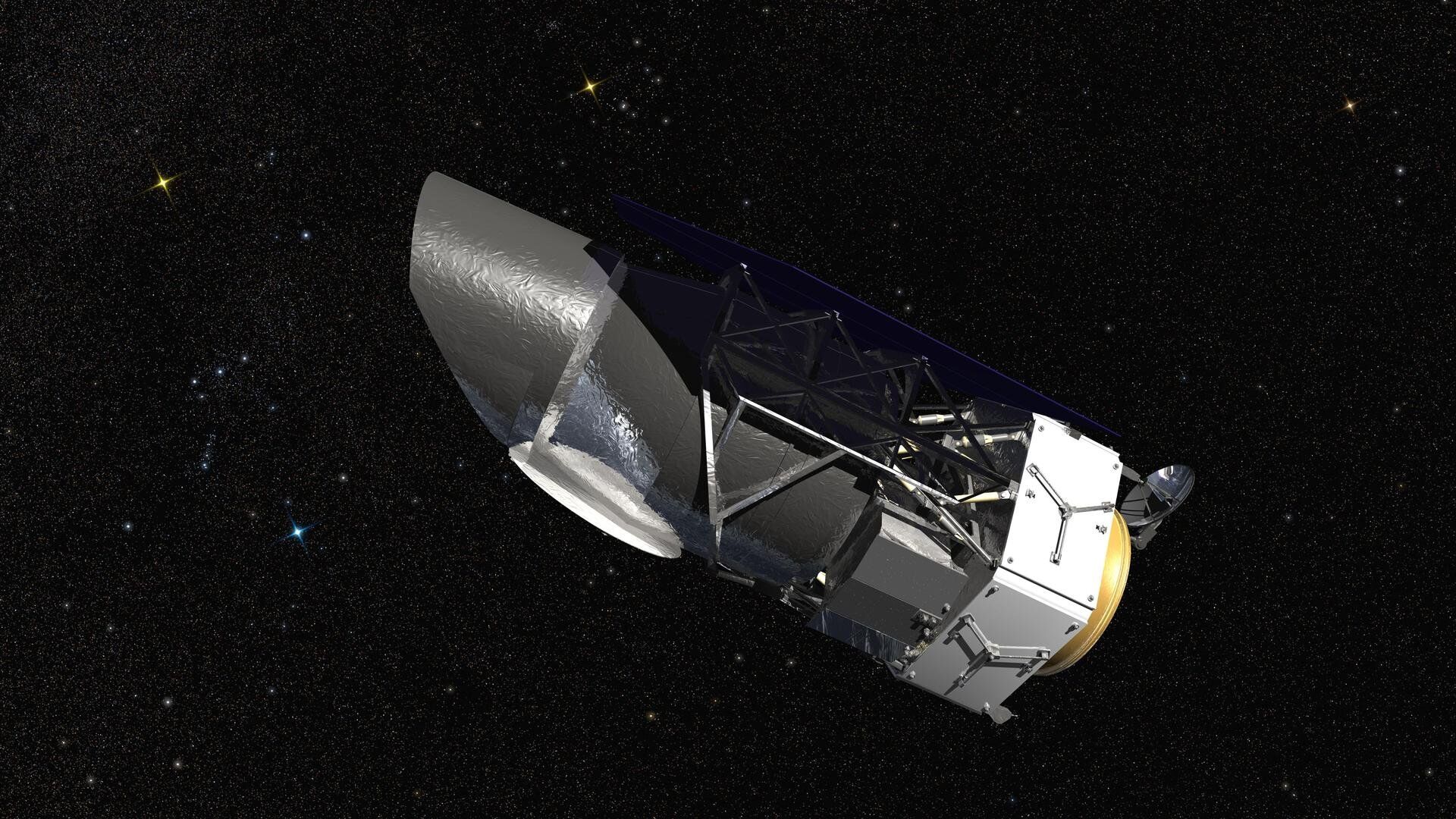https://sputnikglobe.com/20221212/new-technology-might-make-dreams-of-interstellar-space-travel-come-true-1105372357.html
New Technology Might Make Dreams of Interstellar Space Travel Come True
New Technology Might Make Dreams of Interstellar Space Travel Come True
Sputnik International
Although humanity is not yet able to perform manned interstellar flights due to their ultra-long duration, scientists have been struggling to solve this... 12.12.2022, Sputnik International
2022-12-12T08:32+0000
2022-12-12T08:32+0000
2022-12-12T08:32+0000
science & tech
scientific research
cosmos
solar winds
interstellar
https://cdn1.img.sputnikglobe.com/img/107277/17/1072771787_0:0:1920:1080_1920x0_80_0_0_06542ff46f7e0c93032f0f7dcb92c8c2.jpg
A team of physicists led by Mathias Larrouturou, a spaceflight researcher at McGill University, has developed a model for minimazing duration of the interstellar travel. Calculations have shown that a spacecraft with a modified “solar sail” can "achieve velocities approaching 2 percent of [the speed of light] after a year and a half” or “0.5 percent of [the speed of light] after 1 month.” At this speed, a flight to the nearest stars will last from 100 to 200 years. The Voyager probe, for example, would need tens of thousands of years to do so.In order to boost the spaceship relatively quickly to speeds many times greater than modern propulsion systems are capable of, scientists have turned their attention to the so-called “dynamic soaring” effect in the Earth's atmosphere. Birds and gliders usually use this effect to gain speed quickly.The maneuver is only possible when there are two air masses moving with different speeds. Basically, the apparatus needs to enter the stream at a higher speed against its movement and makes a return loop back into the slower stream, like birds do. With each turn the speed will increase until there is a limit in the form of counter flow resistance.A similar effect in the speed of solar wind particle streams is observed at the heliospheric border of our solar system, where solar wind particles collide with particles in the interstellar medium. Scientists believe that a spacecraft with a “solar sail” can repeatedly use different particle streams and speed itself up.Obviously, with a common “solar sail” such a maneuver would be very difficult, if not impossible. Scientists have chosen a "magnetohydrodynamic wing", created by a system of magnets, to play the role of the "sail". In other words, solar wind particles will be captured by magnetic fields.
Sputnik International
feedback@sputniknews.com
+74956456601
MIA „Rossiya Segodnya“
2022
News
en_EN
Sputnik International
feedback@sputniknews.com
+74956456601
MIA „Rossiya Segodnya“
Sputnik International
feedback@sputniknews.com
+74956456601
MIA „Rossiya Segodnya“
are interstellar space travels possible, solar sail technology, manned interstellar flights will be when, are interstellar flights possible, how to leave the solar system, is it possible to travel to other galaxies,
are interstellar space travels possible, solar sail technology, manned interstellar flights will be when, are interstellar flights possible, how to leave the solar system, is it possible to travel to other galaxies,
New Technology Might Make Dreams of Interstellar Space Travel Come True
Although humanity is not yet able to perform manned interstellar flights due to their ultra-long duration, scientists have been struggling to solve this problem for a long time. One solution could be "solar sail" technology and, as it turned out recently, this technology could be vastly improved.
A team of physicists led by Mathias Larrouturou, a spaceflight researcher at McGill University, has
developed a model for minimazing duration of the interstellar travel.
Calculations have shown that a spacecraft with a modified “solar sail” can "achieve velocities approaching 2 percent of [the speed of light] after a year and a half” or “0.5 percent of [the speed of light] after 1 month.” At this speed, a flight to the nearest stars will last from 100 to 200 years. The Voyager probe, for example, would need tens of thousands of years to do so.
In order to boost the spaceship relatively quickly to speeds many times greater than modern propulsion systems are capable of, scientists have turned their attention to the so-called “dynamic soaring” effect in the Earth's atmosphere. Birds and gliders usually use this effect to gain speed quickly.
The maneuver is only possible when there are two air masses moving with different speeds. Basically, the apparatus needs to enter the stream at a higher speed against its movement and makes a return loop back into the slower stream, like birds do. With each turn the speed will increase until there is a limit in the form of counter flow resistance.
A similar effect in the speed of solar wind particle streams is observed at the heliospheric border of our solar system, where solar wind particles collide with particles in the interstellar medium. Scientists believe that a spacecraft with a “solar sail” can repeatedly use different particle streams and speed itself up.
“Inspired by the dynamic soaring maneuvers performed by seabirds and gliders in which differences in wind speed are exploited to gain velocity, in the proposed technique a lift-generating spacecraft circles between regions of the heliosphere that have different wind speeds, gaining energy in the process without the use of propellant and only modest onboard power requirements,” said researchers in the study.
Obviously, with a common “solar sail” such a maneuver would be very difficult, if not impossible. Scientists have chosen a "magnetohydrodynamic wing", created by a system of magnets, to play the role of the "sail". In other words, solar wind particles will be captured by magnetic fields.
“The technique may comprise the first stage for a multistage mission to achieve true interstellar flight to other solar systems,” the study concluded.

